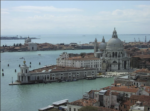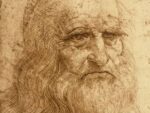Eau&Gaz 2016
.jpg)
Mostra collettiva
Comunicato stampa
Text by Sarah Oberrauch This text in German
Group Exhibition at Lanserhaus
Structures are both the condition and limits for the possibility of practices. Every practice generates structures, which they render visible or influence in their stability. Understandings of structure depend on aspects of the visible in relation to form and function – creative and artistic approaches are capable of uncovering invisible paths and connections and revealing alternative spaces of action and movement.
In this year's exhibition we try to direct the eye towards things that like to keep in the background. Different processes of institutionalization, stabilizing social norms and cementing mechanisms of order and governance are examined. Architectural fossils crystalize as an important focal point – they are what testifies dominant powers and influences societies.
Accompanying our search for such traces of constitution are questions on the aesthetics of resistance. The participating artists investigate the ways in which systems of space and knowledge interlink and forms of representation are deployed. These strategies reveal that only by identifying existing patterns and cycles can different directions be pursued and new structural worlds be discovered.
Mrova lives and works in Amsterdam, Netherlands, and also at times in Vienna, Austria. She acts as social designer, (visual) researcher and filmmaker. The emphasis in her practice lies on mediating social and political issues, places playing key roles in recent historical events and researching tactical (inter)passivity. Her current research focuses on documentary forms of representation and strategies of deconstruction of power by means of highlighting hidden or repressed memories and fragmentary archives.
In South Tyrol, she traces architectural remnants of the fascist era and emphasizes the particular role of the alps, providing a reminder of how this shaped the surrounding area and how functions have shifted today. Together with the youth choir of St. Paul she stages “Bella Ciao”, a song which became known through the italian resistance movement against fascism in the second world war in front of one of the many abandoned local bunkers, as well as the song of solidarity by Bertold Brecht in front of the fascist facade of Bolzano train station.
Monika Grabuschnigg’s works circle questions about the meaning, identity and cultural affiliation of objects, symbols and ornaments once they have experienced a shift or decontextualization, particularly in the form of souvenirs and other consumer products. She focuses on those which originally constituted or pointed to a threat.
In her last exhibition “Rest, You Restless Guardians”, eleven sculptures were exhibited which were inspired by the weaving patterns of Afghan War tapestries. In the 1980s, Afghan weavers began to address the socio-political events of their country in carpet patterns.
Over time, these found a market and are now being sold worldwide. However, what happens with these rugs on their journey across the globe? What changes do they undergo?
If a threat from long ago is now far away from the viewer, what is left over beyond a kind of fetishism? This issue is also inherent in the phallus-like form, although the “feminine” color and materiality of the sculpture point beyond a mere attribution of gender identities.
Zohar Gotesman is a sculptor for whom any material can serve to help express his burlesque ideas. Gotesman’s sculptures vary in style and materiality. He has no auratic attitude towards his sculptures, but instead plays with his material, extending it as well as the concept of sculpture itself. He makes use of classical content such as the portrait bust or equestrian statues. On the one hand, his sculptures refer to a classical Greek ideal of the body and its representation, but on the other hand, they are always associated with excretions and remains of the body. This evokes a disturbance for the viewer, and usually results in humorous satire against his own classical artistic notions.
The Wa's public interventions and sculptures are obstacles which could be rephrased with the terms “urban hacking” or “artivism”. Unmistakably, his artistic practice is linked to european avant-garde movements such as Situationism, Dada of Fluxus. The often comical, always poignant works stir up the observer and ideally succeed in generating skepticism towards society's control and surveillance mechanisms. Historical strategies of appropriation such as the Situationists' “dérive” are reflected on and revisited in the light of current aesthetic manifestations and practices.
Vincent Grunwald's work deals with aesthetic paradigms of organizing structures. These seemingly functional measures, often kept in the background, are examined and their representational aspects highlighted – for example, the structural measures of design in the building industry reveal clear ideas of a particular aesthetic.
His series “Filter” looks at the way fences and barrier systems merge with its severed areas, as the title suggests, can be used as filters for enabling an altered view of the area. Similarly, traces of security technology are engraved in the faces of passports or banknotes. These security features provide information on several levels – information which cannot be read by everyone and, in the same way as the barrier fences, function as “aesthetic agents of exclusion”.
Stefan Alber's works are often specific involvements with places and phenomena, often focusing on socio- economical change and its influences. Ruins, rubble and debris are recurring motives in his work. The decaying of a city as well as gentrification and the accompanying disappearance of marginalized demographic groups from certain areas leave not only vacant space, but also specific traces. Found components are dismantled and transformed. Photographs and sculptures demonstrate the ambiguity of such remains, while at the same time emphasizing their materiality.
In “Light case”, the background colors of photographed objects are inspected regarding their implications for representation. They mirror particular aesthetic perceptions perpetually reappearing in new contexts.



